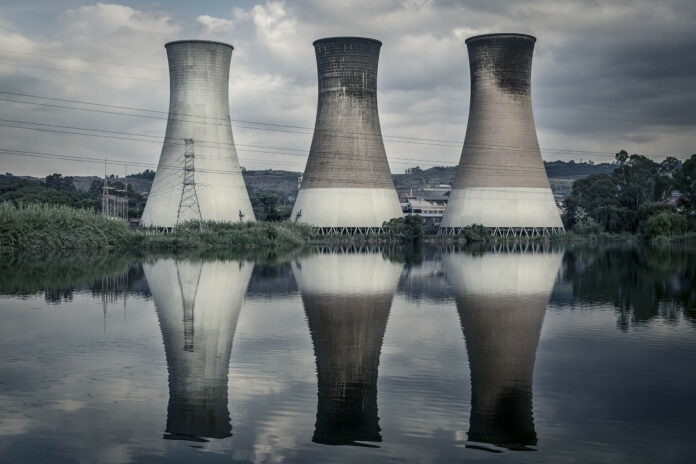The president has kept his promise of energy policy certainty, at least to an extent. In the past month, the department of mineral resources and energy has gazetted two ministerial determinations, the most recent being the much-awaited 11 800MW of additional power. But the National Energy Regulator of South Africa’s (Nersa) reasons for the decision reveal a deeper problem with our electricity sector.
The ministerial determinations mean that the total amount of power available nationally will increase by 13 800MW in the next decade (unless new determinations are gazetted). Eskom’s installed capacity to date without independent power providers’ (IPP) support is in the region of 43 000MW to 45 500MW, but it only has about 30 000MW available.
What happened to the 13 000 or 15 000MW? How can such large amounts of power go missing?
It sounds similar to misappropriation of funds or unlawful reallocation of funds — in this case, misappropriation of power or unlawful reallocation of power.
Someone is paying for that missing electricity, be it because of a lack of maintenance, or corruption, or electricity theft. That “someone” is you and I, the average South African law-abiding fools.
When Eskom is load-shedding (and even when we become more energy-efficient), we still pay for the power it was unable to provide to us. We pay for the inability of Eskom to produce power!
Firstly, we pay through the tariff increases that we are subjected to and that Eskom does through what is called a regulatory clearing account. Essentially, Eskom claims back money it was unable to collect from electricity sales based on forecasted demand.
The second way we pay for the missing power is through the bailouts that Eskom has received, because that money is taken from somewhere. If it is based on a loan, we pay back the loan via our taxes, if not directly passed into our electricity tariff.
So it is important to know what the president is talking about when he says that “this signals the government’s clear intention to move ahead with one of the key reforms that is needed to unlock the growth of the economy and attract much-needed investment”.
The investment is in electricity infrastructure, not in the users of electricity and the associated infrastructure. Government takes for granted that we will pay price increases because we are held captive to Eskom’s monopoly. Whether Eskom builds intermittent renewable energy or dirty coal plants, hazardous nuclear power or poisonous gas plants, we have to pay for it, and in our electricity sector, we pay for something even before it is built.
It is also unclear how having more coal and gas — which are fossil fuels — will help South Africa meet its international and national climate change obligations.
The electricity sector in South Africa is robust enough to be regulated, with three distinct customer groups. There should be distinct markets in the electricity sector that satisfy the different needs of the domestic consumers (residential and commerce); large industrial-manufacturing energy users; and international markets that fit into the Southern African power pool (SAPP).
But what we have instead is regulation by wholesale; we are all put into one boat and expected to compete and share in the limited space. The consequences of this are not only in perverse tariff cross-subsidisation but also in the regulating and adoption of solutions — particularly technology-based solutions.
Here is an example: when loadshedding happens, commerce and residential sectors are switched off. Large industrial users are left on the grid unless there is an emergency situation and even in that case, the large industrial users are paid not to demand electricity from the grid. Let that sink in: the large industrial users — meaning mines, industry and manufacturing plants — are incentivised not to use power, whereas residential and commercial sectors are not; in fact, we are penalised.
To add insult to injury, many large users have what Nersa calls negotiated price agreements. That means when electricity prices regularly go up, the large industries are cushioned from the increases. Other than the fact that the large industries pay prices that are way below the average Nersa-determined price, the large energy users are having a great day when it comes to benefiting from electricity regulation.
The group that is holding up this sector is actually standard-tariff consumers, average people, you and me. One consumer group is held captive for the benefit of others, including country-level agreements that are concluded in cross-border sales or, in this case, in the SAPP market.
One of the solutions we have is to liberate the households, the commercial centres and to allow greater participation by average consumers in the solutions. The big MW announcements are for the large users and the SAPP markets, not for the average household. After all, they give certainty and security of supply, which both these customer groups have, that you and I don’t enjoy.
Removing restrictions
What we need is to be able to generate our own domestic electricity. What we currently have is a passing of the duty to develop policy and regulation on self-generation.
Residential or domestic self-generation can be transformative. It is democracy; in the electricity sense, it is energy democracy.
The government says it has removed the licensing requirement for self-generation projects under 1 MW, but the standards, the guidelines and the process for application and approval are vague and opaque, as though there is no provision to facilitate actual self-generation.
This sounds to me like the executive announcement on free education, which the populace is then unable to exercise because there is no place to access free education.
The restrictions on the domestic consumer exercises greater control of their energy choices. You can only get your power from one place: Eskom. Even if you get it from your municipality, it still comes from Eskom.
In order to really transform and reform the sector, the domestic consumer needs options, particularly the option to sufficiently self-generate electricity, and any additional demand on Eskom’s power from a household that self-generates should be priced at a premium.
However, the current list of self-generators (facilities under 1 MW) is made up of large industrial users — mines and secondary industries. The current crop of self-generators pay way below their appropriate cost-reflective price for their customer class. They also curtail their investment so that they can only produce to the extent to which they are compliant with the definition of self-generators.
I do not blame them, it is inherent in their nature to take opportunities when they see gaps. But things add up. Consumers who benefit from negotiated prices also benefit from demand-side management incentives such as power buy-back schemes: they buy electricity at far below average prices and they are incentivised to be self-generators. Who do you think is left with the bill at the end of this feast?
We, the average people, are not at the table, we are on the table; we are on the menu and we are the meal. The captured consumer is a delicacy.
When ordinary people try to escape this situation, we find that the municipality is not a real alternative. The municipalities are on their knees. Municipal finances don’t make sense; the systems are falling apart; and the regulatory approach speaks to municipalities in good standing, which are few and far in between.
Households and commerce hold the greatest potential for self-generation. The independent power producers (IPPs) will pass on the transmission and distribution network costs onto the very same consumer group that can produce the same service or product for a much lesser price, while in the meantime allowing for the transitioning into more applicable pricing regimes at different levels.
If metros are going to adopt the current dominant approach, integrated development plans will be fundamentally changed. The ability to raise contingent funds based on non-payment will no longer be a national issue but a local one – the local government will be taking all the risk and none of the benefits.
So I ask again: who do you think is left with the bill at the end of this meal?
Because we are not allowed to produce our own power, we are unable to share the production of power we generate, we are forced to pay for bad decisions and we are the proverbial piggy bank. The captured consumer is a good blesser.




